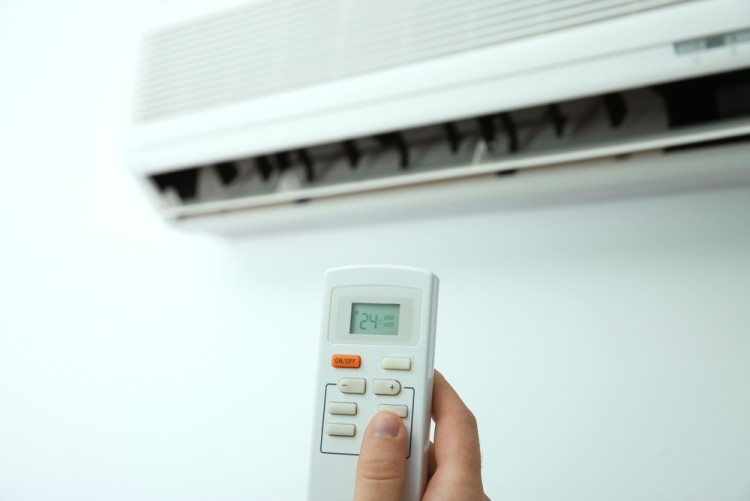
Picture this: you step into your home after a long day under the blazing sun, eagerly anticipating the refreshing coolness that awaits you. But instead, you're greeted with weak airflow and tepid air. Frustrating, right? This scenario often arises when homeowners overlook the significance of proper aircon sizing.
Think of your air conditioner as a superhero, ready to save the day and rescue you from the relentless heat. But even superheroes have limitations, and size matters when it comes to cooling. Whether you have a more powerful air conditioner, a split system air conditioner, a portable unit, or any other type, ensuring its size matches your cooling needs is crucial for optimal performance.
By understanding the relationship between air conditioner capacity and room size, you can unlock the full potential of your cooling system. Gone are the days of sweating it out in rooms that feel more like saunas. With the right-sized air conditioner, you can experience a cool and comfortable haven right in the heart of your home.
Understanding Air Conditioners
An air conditioner, often called an "aircon," is designed to regulate indoor temperature, humidity, and air quality. Its primary purpose is to provide cooling during hot weather, creating a comfortable and livable environment for occupants. Air conditioners remove heat and moisture from the air, resulting in cooler and drier indoor conditions.
Types of air conditioners:
● Split system air conditioners
● Portable air conditioners
● Window air conditioners
● Ducted systems
Components of an air conditioning unit:
Air conditioning units, regardless of the type, consist of several key components:
● Compressor: The compressor is the heart of the system, pumping refrigerant and facilitating heat transfer.
● Condenser: The condenser coil helps dissipate heat by releasing it to the outside environment.
● Evaporator: The evaporator coil absorbs heat from the indoor air, cooling it down.
● Refrigerant: A refrigerant is a chemical substance that circulates through the system, absorbing and releasing heat to facilitate cooling.
● Thermostat: The thermostat allows users to set and control the desired temperature.
● Fans: Fans assist in air circulation and help distributes cooled air throughout the room or house.
● Filters: Air conditioning units often have filters to remove dust, allergens, and other particles from the air, improving indoor air quality.
The Consequences of Incorrect Air Conditioner Sizing
The cooling capacity of an air conditioner refers to its ability to remove heat from a room. It is measured in British Thermal Units (BTUs) or kilowatts (kW). Determining the cooling capacity of a powerful air conditioner required for a room depends on size, insulation, and climate conditions.
Consequences of undersized air conditioners:
● Inadequate cooling
● Constant running and high energy consumption
Consequences of oversized air conditioners:
● Short-cycling and inefficient cooling
● Higher running costs and energy waste
Proper aircon sizing is crucial to achieving optimal cooling performance while minimising energy consumption and maintaining comfort. It ensures that the AC unit, whether a ducted system, portable air conditioner or window type, operates efficiently and effectively, providing the desired cooling without straining the system or incurring unnecessary expenses.
Factors to Consider for Proper Aircon Sizing
Room size and floor space
The size of the room is a critical factor in determining the appropriate aircon size. Larger rooms require air conditioners with higher cooling capacities to effectively cool the space. Consider the room's square meters or square footage when selecting the right-sized air con unit.
Desired temperature and climate conditions
The desired temperature you want to achieve and the prevailing climate conditions in your area play a role in aircon sizing. Hotter climates or a preference for cooler temperatures may require higher cooling capacities to maintain comfort.
Insulation and roof insulation levels
The insulation levels of your home affect its ability to retain cool air. Well-insulated homes require less cooling capacity as they minimise heat transfer. Additionally, roof insulation can significantly impact the cooling load, especially in houses with high ceilings or attic spaces.
Sunlight exposure and heat gain
Rooms exposed to direct sunlight receive more heat, increasing the cooling load. Consider the orientation of windows, the amount of sunlight entering the room, and the use of shading devices or curtains to reduce heat gain.
High ceilings and multiple levels
High ceilings and multiple levels can affect air circulation and cooling efficiency. These factors may require higher cooling capacities to overcome the additional vertical space and ensure even cooling throughout the floor area of the room or house.
Type of room and occupancy
Different rooms have varying cooling needs. Bedrooms, living rooms, kitchens, and offices may have different occupancy levels and heat-generating appliances, which impact the cooling and air conditioning capacity requirements. Consider the specific usage and occupancy patterns when determining aircon sizing.
Other factors influencing cooling needs:
● Poorly insulated areas: Areas with poor insulation, such as garages or extensions, may require separate considerations due to their higher cooling demands.
● Constant running requirements: Some rooms, like server rooms or home offices with electronics, may require continuous cooling and have higher cooling load demands.
● Specific room requirements: Specialized rooms, such as home theatres or storage areas, may have unique cooling requirements based on their particular use and equipment.
Considering these factors will help you accurately size your air conditioner, ensuring it meets the specific cooling needs in your Australian home. You can optimise your aircon unit's performance and energy efficiency by considering room size, insulation, climate conditions, and other factors.
The Benefits of Accurate Air Conditioner Sizing
Remember, accurate air conditioner sizing offers numerous benefits:
● Enhanced Comfort: A properly sized air conditioner can effectively cool your space, providing consistent and comfortable temperatures throughout the room.
● Energy Efficiency: Choosing the right-sized air conditioner helps minimise energy consumption. It prevents excessive cooling cycles, reducing energy waste and lowering utility bills.
● Cost Savings: By avoiding the pitfalls of undersized or oversized air conditioners, you can save money in the long run. An accurately sized unit operates efficiently, reducing maintenance and repair costs while extending the lifespan of your air conditioner.
● Environmentally Friendly: Optimal air conditioner sizing contributes to energy conservation, reducing carbon footprint and promoting a more sustainable lifestyle.
● Improved Air Quality: Properly sized air conditioners maintain adequate airflow and humidity control, promoting better indoor air quality by reducing the risk of mould and mildew growth.
● Enhanced Durability: By matching the cooling capacity to the room size, your air conditioner operates within its intended limits. This reduces the strain on the system and helps prolong its lifespan.
The Process of Air Conditioner Sizing
1. Using air conditioning size calculators
Air conditioning size calculators are valuable tools that help homeowners determine the appropriate cooling capacity for their rooms. These calculators consider room size, insulation levels, ceiling height, and sunlight exposure to estimate the required cooling capacity. Online calculators or those provided by air conditioner manufacturers can assist in this process.
2. Consulting with professional installers
Seeking advice from professional air conditioner installers or HVAC (Heating, Ventilation, and Air Conditioning) technicians is highly recommended. These experts have the knowledge and experience to accurately assess your cooling needs based on room size, insulation, and specific requirements. Consulting with HVAC professionals can also help you determine the different types of heating and cooling systems. They can calculate heat load and provide personalised recommendations for the right-sized unit.
3. Considering the energy efficiency and running costs
While sizing the right air conditioner up, it's essential to consider its energy efficiency and running costs. Look for units with high energy efficiency ratings (such as those with higher Energy Efficiency Ratio or EER ratings). A more energy-efficient air conditioner saves on electricity bills and minimises environmental impact. Consider the long-term cost of operating the air conditioner and balance it with its cooling capacity.
4. Selecting the right size air conditioner for different room types
Different room types may have specific requirements when it comes to aircon sizing. Here are some considerations for selecting the right-sized air conditioning system for common room types:
● Bedrooms: Aim for a comfortable sleeping environment by choosing an air conditioner to maintain the desired temperature throughout the night.
● Living rooms: Consider the size of the living room, occupancy, and any additional heat sources, such as entertainment systems or large windows.
● Kitchens: Consider the heat generated by cooking appliances and select an air conditioner with adequate cooling capacity to counterbalance it.
● Home offices: Consider the heat generated by electronic equipment and the need for consistent cooling during work hours.
Bottom Line
Regarding air conditioner sizing, consulting with professionals and considering various factors is essential to ensure optimal comfort and energy efficiency in your home or office. By working with HVAC experts, you can receive personalised guidance and accurate calculations to determine the right-sized air conditioner for your needs.
When considering air conditioner sizing, consider factors like room size, insulation, climate conditions, and specific room requirements. Seek guidance from professionals who can perform heat load calculations and provide expert air conditioner size recommendations.
By investing time and effort into selecting the right-sized air conditioner, you can enjoy maximum cooling efficiency, comfort, and cost savings. So, consult with professionals, consider the factors influencing sizing, and decide on a new air conditioner to optimise your cooling experience in Australian homes.










Author
Homesgofast com
Homesgofast.com is an international real estate portal and news source for Google news. Publishing international real estate, finance, homes and travel-related news and blogs for a targeted audience since 2002. Each news item is circulated to thousands of potential readers each day and is also available to the millions of people who sign up for Google news alerts. Find homes offered for sale and to rent direct from owners and some of the best real estate agents from over 35 countries